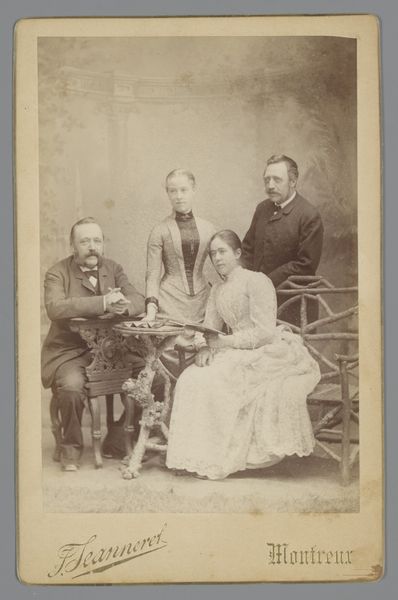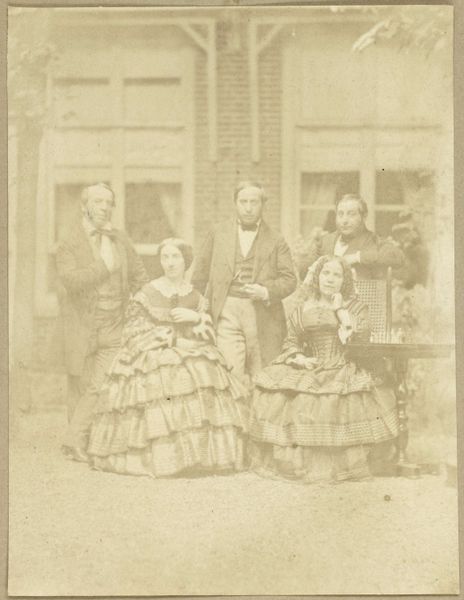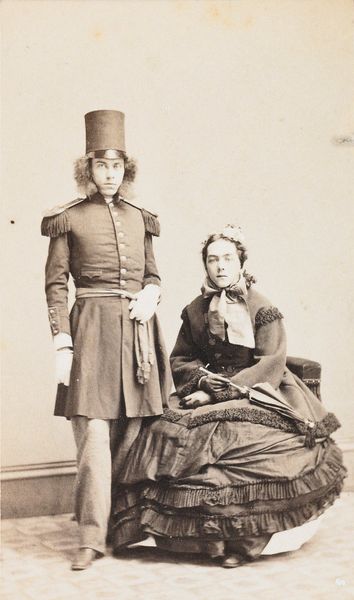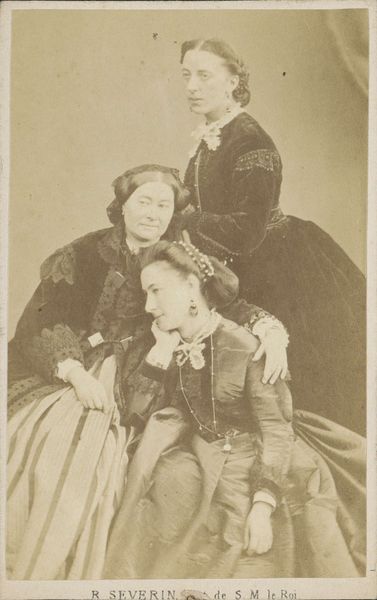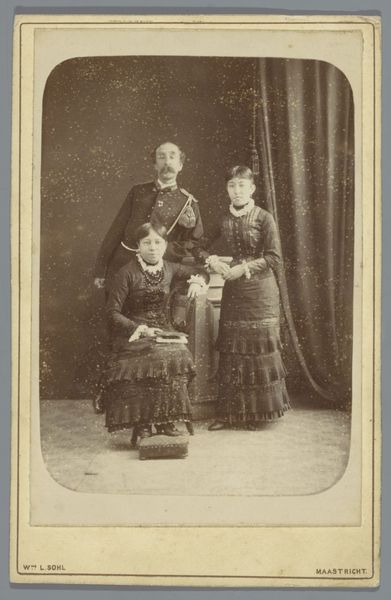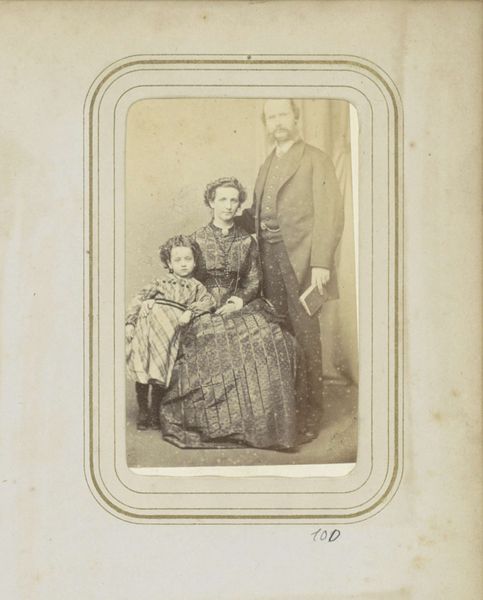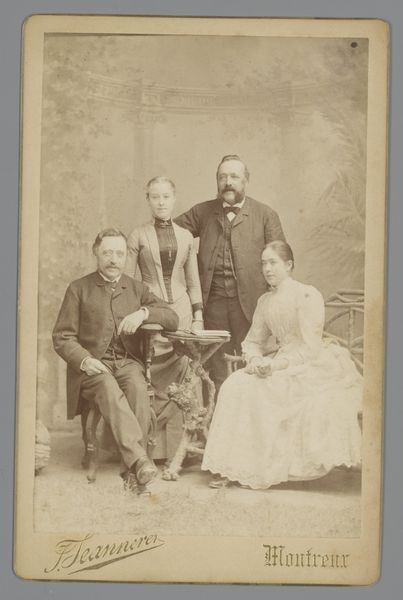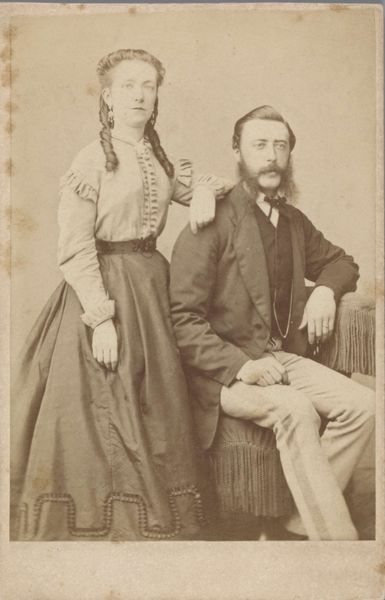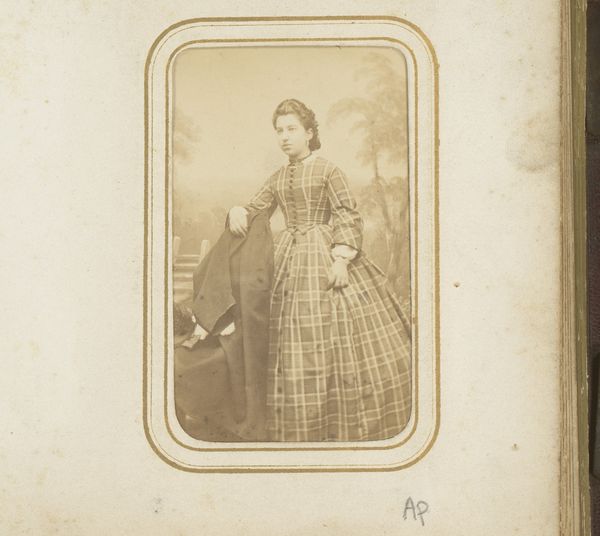
Portret van de Oppenheims, schoonfamillie van de fotograaf c. 1852
0:00
0:00
Dimensions: height 142 mm, width 125 mm
Copyright: Rijks Museum: Open Domain
Curator: Before us, we have a fascinating gelatin silver print by Eduard Isaac Asser, dating to around 1852, entitled "Portret van de Oppenheims, schoonfamillie van de fotograaf" – or "Portrait of the Oppenheims, the photographer's in-laws." Editor: It strikes me as an image of somber formality. The palette is restrained, limited by the photographic process of the time, of course, but the composition reinforces the rigidity. The subjects, especially the woman in the center, seem incredibly still. Curator: Indeed. This formality reflects the rising social importance of photography in the mid-19th century. It offered the burgeoning middle class a relatively accessible means of portraying themselves in a manner previously reserved for the aristocracy through painted portraits. Think of the portrait studio as a social stage. Editor: And yet, I find myself drawn to the contrasting textures. The intricate pattern of the woman’s dress, against the smooth dark fabric of the men's coats, creates an interesting visual tension. It breaks up the potentially monotonous color scheme and invites the eye to linger. Curator: Precisely. It also shows us the ways in which nascent photographic techniques were shaping – and being shaped by – the aesthetics of Romanticism, with its heightened emphasis on emotion and dramatic contrasts. Though static, there's a quiet narrative at play; perhaps about familial connection, and definitely about the social performance of respectability. This image underscores how the expansion of photographic practices helped consolidate new conceptions of family and class during the industrial era. Editor: The positioning of the figures, too, lends itself to a certain interpretation. The seated woman, flanked by two standing men, suggests perhaps a paternalistic social structure of the time. Their expressions, largely unreadable, add another layer of intrigue. Do we detect hints of unease? Stoicism? Curator: Such details would provide critical insight, were we able to definitively ascertain the social and marital relations between these subjects. Editor: An image that reminds us, as the best art always does, of how the aesthetic choices intersect and reflect their world. Curator: Exactly, revealing to us the very nature of the cultural shifts as photography transitioned into a new, ubiquitous method of portraiture.
Comments
No comments
Be the first to comment and join the conversation on the ultimate creative platform.

